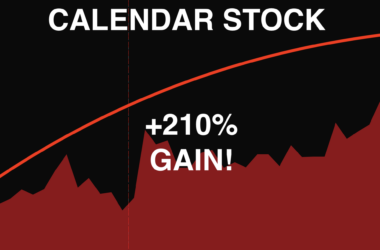Good morning, traders…
Ben here.
Imagine having the power to embrace the uncertainty of the options market without losing sleep.
I’ll let you in on a secret: understanding your risk tolerance is your ticket to doing so.
Risk tolerance is your capacity to handle financial uncertainty and potential losses. But this isn’t a ‘one-size-fits-all’ concept … it’s as unique as your fingerprint.
For some people, the excitement of high-risk, high-reward trades is thrilling. For others, the mere thought of losing a few dollars can cause hair-raising stress.
The point is, you’ve gotta know how much risk you can handle to create a trading strategy that works.
This self-awareness can help you:
- Stop making rash trading decisions based on fear or greed…
- Stay on track to reach your ultimate goals as a trader…
- Move through the options market with confidence…
- Size your trades to fit your personal financial situation…
Today, I’ll show you the four steps to determining your risk tolerance…
Risk vs. Reward
When trading, you must evaluate the potential rewards of each setup against the risk you’re taking.
A well-calculated risk might be more acceptable if the potential gains are astronomical.
For example: I recently went “irresponsibly long” on Amazon.com, Inc. (NASDAQ: AMZN) calls — way above my normal position size — because the setup checked all of my boxes and I was extremely confident in the stock cracking $200. Sure enough, it turned out to be one of the best trades of my career.
The options market is unique in this way. Sometimes, excellent setups present themselves within an elevated risk profile…
If you have the fortitude to face enormous risks to make potentially massive gains, you might be cut out to be a great trader.
But it’s all about knowing when, and how, to execute these plays.
And this has just as much to do with your personality as it does with your strategies…
Know Thyself
Some people are naturally more comfortable with risk and uncertainty. They can handle market fluctuations without feeling anxious.
These are the same people who love to play table games in Las Vegas.
Others might experience higher levels of stress and anxiety when it comes to putting their hard-earned money on the line, which can naturally affect their risk tolerance in the options market.
You have to “know thyself” to be a world-class trader … How emotionally resilient are you in the face of financial stress?
Different personality types have varying levels of risk tolerance. Understanding your personality can help you align your trading approach with your comfort level.
If you find your maximum risk tolerance and stick to it, you should never be stressed in the market. It’s like a superpower.
But there’s another aspect to consider…
Personal Money Management
Your current financial situation plays a critical role in your risk tolerance.
Consider factors such as your income, savings, outstanding debts, and other financial commitments.
A trader with substantial savings and a stable income might have a higher risk tolerance than someone with limited financial resources, living paycheck-to-paycheck.
Someone raising a large family (and significant financial commitments) might have a lower risk tolerance as they prioritize stability and security.

Meanwhile, single people with less financial responsibility might be more open to taking on higher risks.
Finally, age is an important factor as well.
If you’re in your 20s, you should be comfortable taking more risks. If you lose some money at 25, you still have decades to make it back.
But if you’re a few years away from retirement, you probably won’t want to risk your golden years on near-term options trades.
Position Sizing
Once you’ve assessed your financial situation, the final (and most important) step is determining the appropriate position size for your trades.
Position sizing is the key to managing risk effectively. Individually-tailored position sizing will eliminate most of your trading stress while taking on too much size will have you pulling your hair out with anxiety.
I recommend risking no more than a small % of your total account value on any single trade.
This percentage typically ranges from 1% to 5%, depending on your risk tolerance and account size.
One of the beautiful things about options trading is the asymmetrical risk/reward profile. When you buy options, you can’t lose more than the price of that contract — but you can potentially make several multiples beyond your initial investment.
Then, as your trading experience and account size grow, you can consider increasing your position sizes.
Determining your risk tolerance involves a careful assessment of your financial situation, investment goals, experience, emotional resilience, and time horizon.
Now, before we go, let’s look at:
💰The Biggest Smart-Money Bets of the Day💰
- $3.8 million bullish bet on GOOGL 08/16/2024 $195 calls @ $2.72 avg. (seen on 7/23)
- $1.8 million bullish bet on AHCO 12/20/2024 $12.50 calls @ $1.20 avg. (seen on 7/23)
- $1.7 million bullish bet on KBR 12/20/2024 $70 calls @ $4.60 avg. (seen on 7/23)
Happy trading,
Ben Sturgill
P.S. Risk tolerance is even more important to consider during earnings season. It’s one of the riskiest (and most exciting) times to trade options.
But here’s what many don’t know: With the right tools and data, you can often see whether a company will beat or miss before the report occurs.
Realizing this, I’ve designed a specialized calendar system to accurately exploit earnings season for potentially massive gains…
Example: This calendar system recently projected a 91.2% earnings beat on Broadcom … BEFORE its call options exploded 1,014% in less than a day!*
You won’t want to miss the details I’ll reveal during Operation: Master Calendar on TOMORROW, July 25th, at 8 p.m. Eastern.
Spots are filling up fast — Click here now to reserve your seat before it’s too late!
*Past performance does not indicate future results




